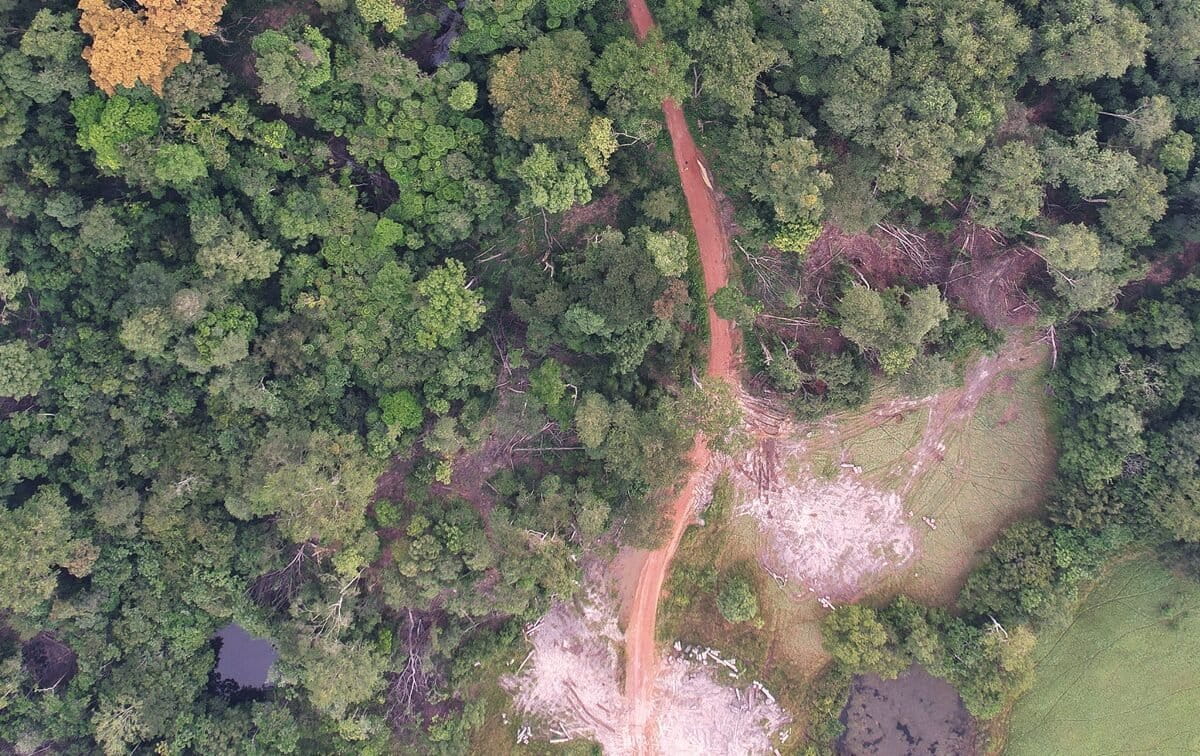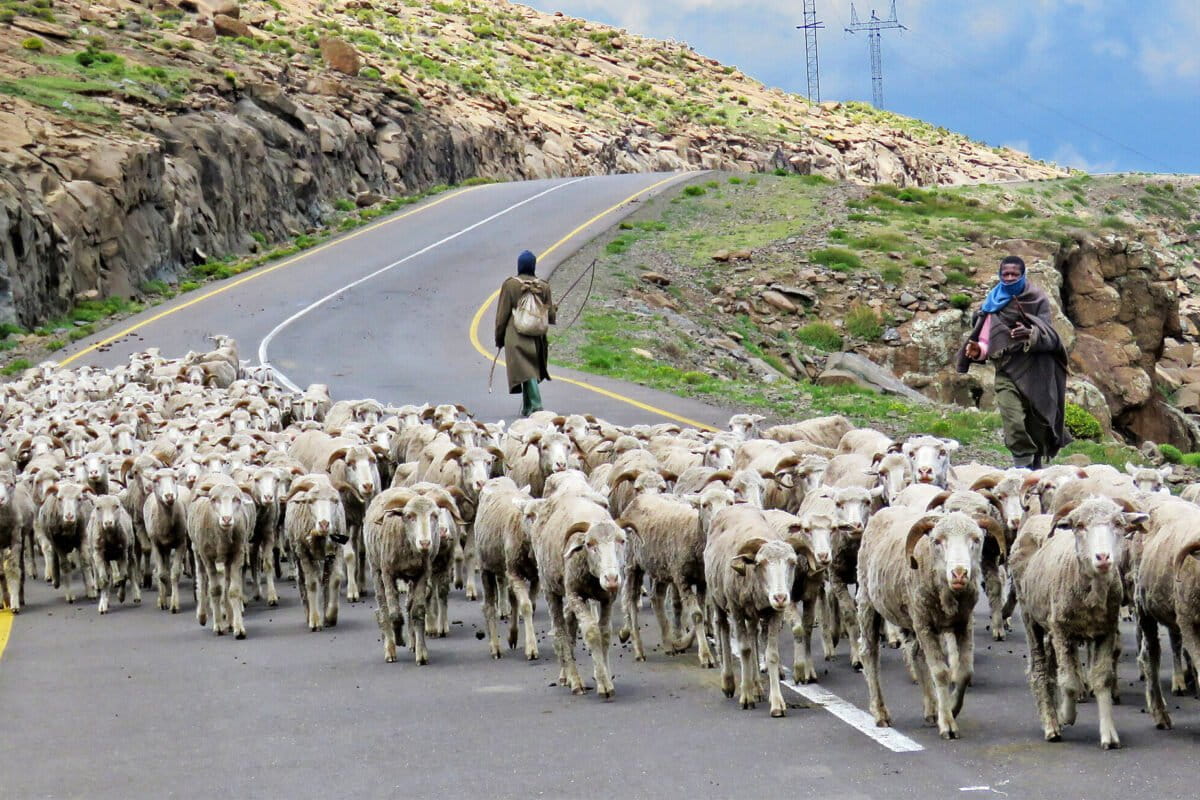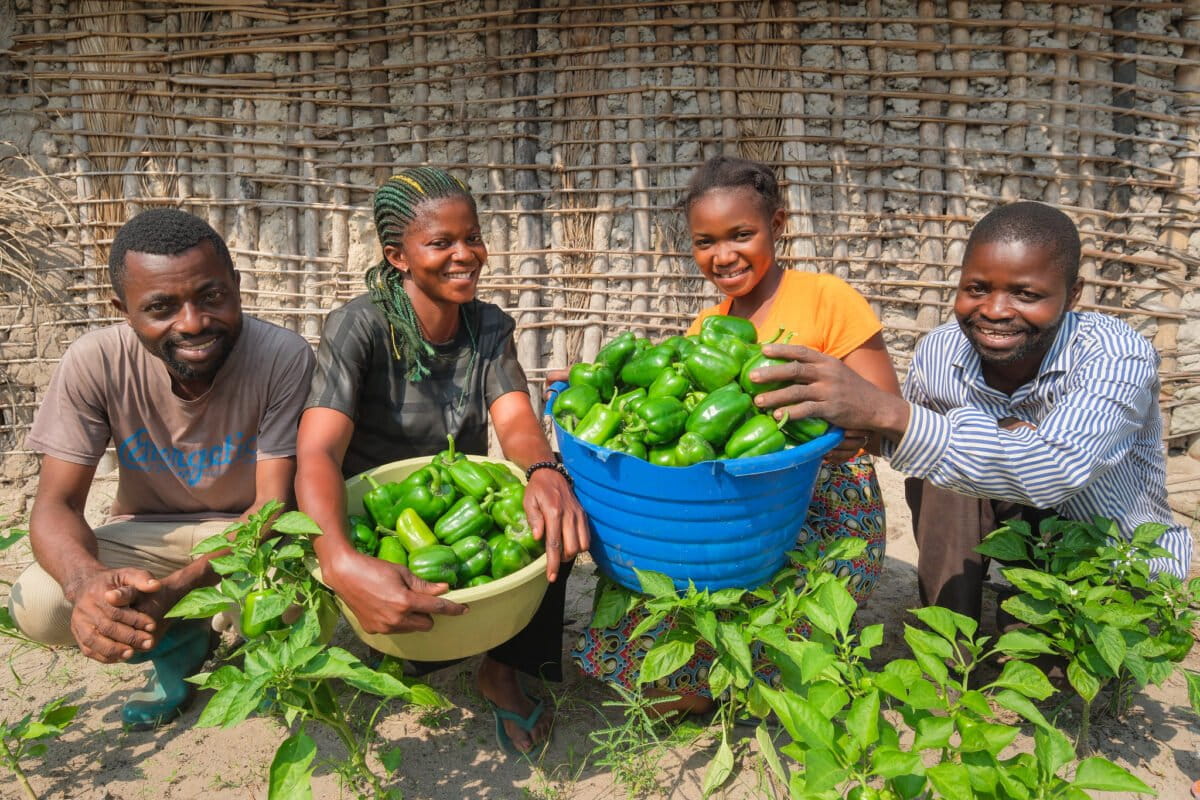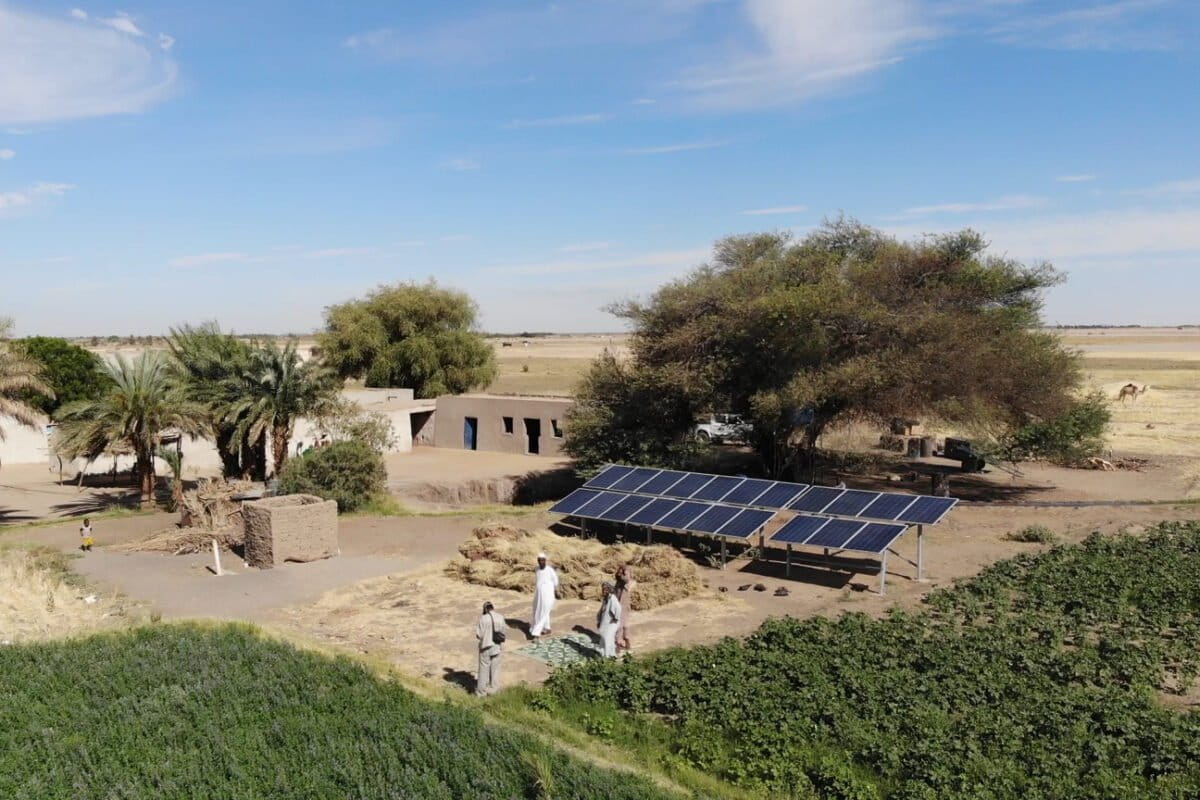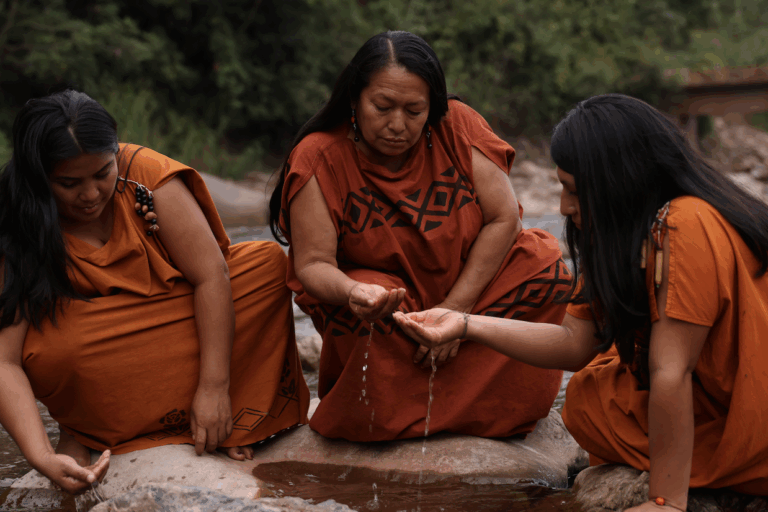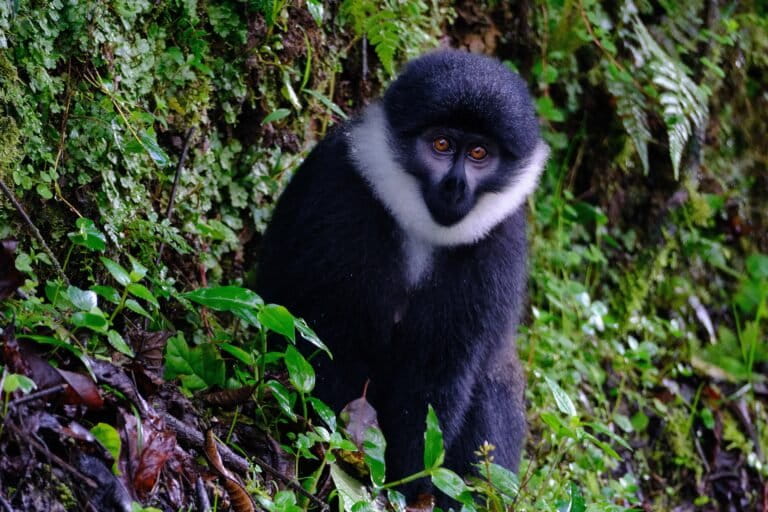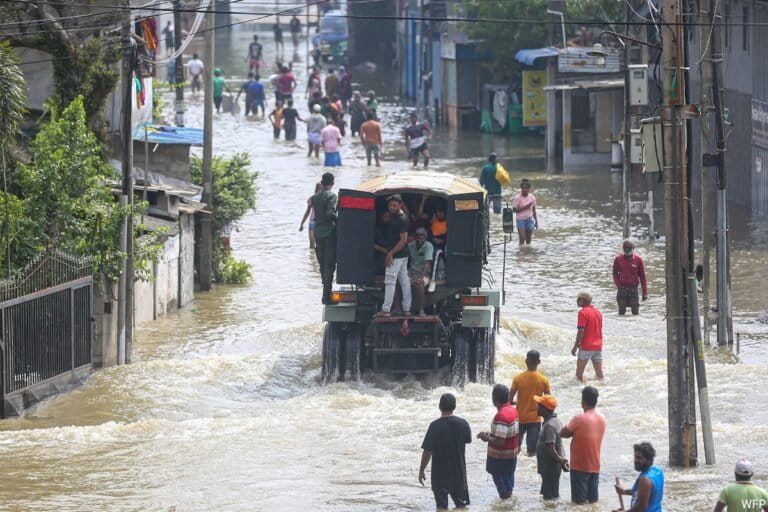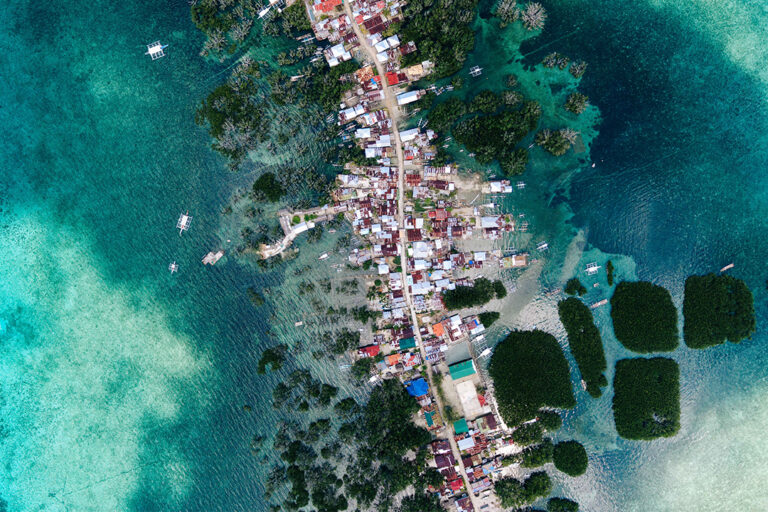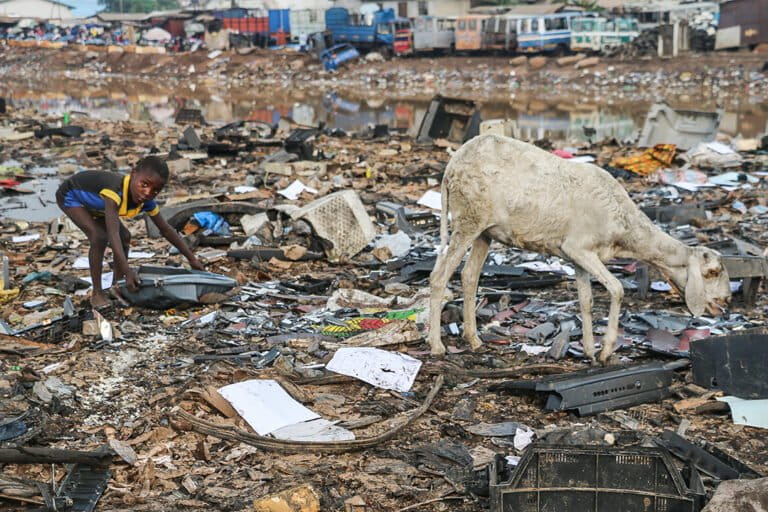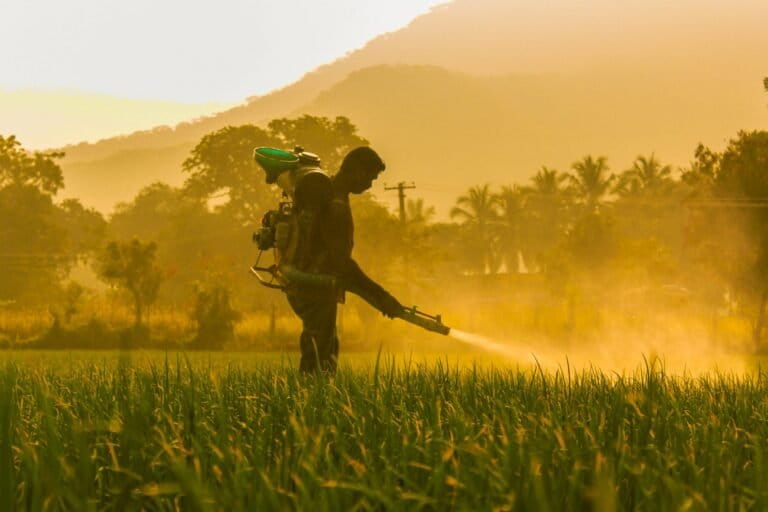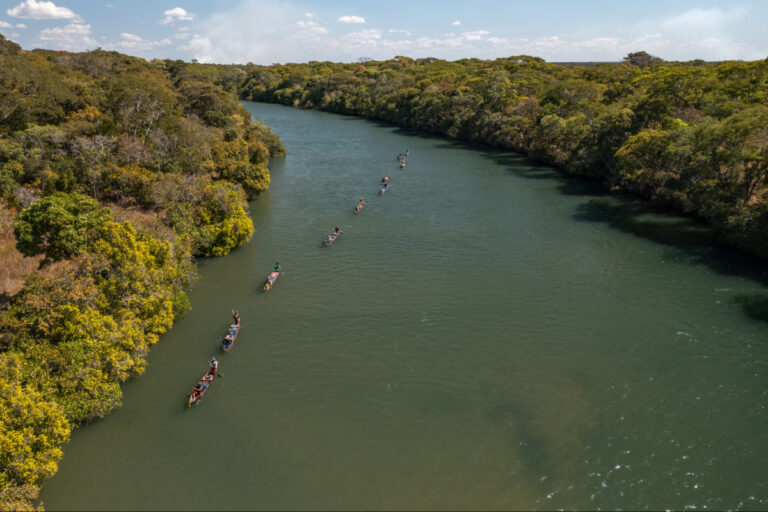- Taily Terena is a young Indigenous activist from Brazil of the Xané (Terena) ethnicity whose work centers on human rights, gender issues, youth and environmental protection.
- In 2025, Taily was the first-ever Brazilian Indigenous person to receive the Global Citizen Prize, a recognition for activists around the world.
- In this Mongabay interview, she speaks about the role of Indigenous women in protecting territories, the importance of ancestry and youth and her expectations for COP30 in Brazil this year.
- Taily emphasizes the importance of humanity reconnecting with and recognizing itself as part of nature.
Growing up, Taily Terena lived between two worlds: Brazil’s capital, Brasília, where she was born, and the Taunay Ipegue Indigenous Territory, more specifically in the Bananal community, located in the state of Mato Grosso do Sul, in the Brazilian wetlands. Even spending most of her time in Brasília, Taily never stopped returning to the Indigenous land, which has always kept her connected to her Indigenous roots.
She is Xané, better known as Terena, an ethnic group that lives mainly in the state of Mato Grosso do Sul but is also present in areas of the states of Mato Grosso and São Paulo. “A friend of mine says that we could be born far from the Indigenous territory, but our spirit calls us back. They call us to fight, and I feel this very strongly inside me, even being born in the city,” Taily says.
She was born in 1993, the daughter of Emília Dulce Florentino, an environmental activist, and Marcos Terena, one of the pioneers of the country’s Indigenous movement. Today, she follows in the footsteps of her ancestors as a young activist whose main topics of work are human rights, gender issues, youth and environmental protection. She is internationally recognized for her work, and in 2025, she became the first-ever Brazilian Indigenous person to receive the Global Citizen Prize, which celebrates activists worldwide.
Taily holds a degree in anthropology and in social sciences from the University of Brasília and today works at the International Indian Treaty Council, an organization that monitors whether the rights of Indigenous peoples are being recognized in international conventions and negotiations. In Brazil, she also contributes to the Institute of Indigenous Memory and Science and with the Inamatí Xâné Terenoe Terena Youth Collective, working on the topic of mobilizing youth. Gender issues related to Indigenous women’s rights are also an important part of Taily’s work, in the sense that she advocates for recognition of women’s relevance in decision-making spaces and defending rights.
Mongabay: You have a background in activism related to gender topics and the role of Indigenous women. How are gender issues related to the fight against the climate crisis?
Taily Terena: How can I translate? I always wonder how we translate our ideas, because this relationship is so clear to us. When we say ‘body-territory,’ we mean that our body is our first territory. Before we set foot on this Earth, on Mother Earth, who welcomes, nourishes and cares for us, our first territory was our mother’s womb. That’s where our relationship with territory and gender begins. Taking care of our territory means taking care of our bodies, as I am here with my arm, my leg and my lung, but also taking care of the territory around me.
So the gender issue comes up very strongly because we consider ourselves to be like a thermometer. If something is wrong with the Earth, it will be wrong with our bodies. And with women, this is even more visible: Our bodies are thermometers. If a river is polluted, women will be the first to feel it. Women begin to feel the pesticide contamination in their bodies, which is passed on to their children and babies.
So bringing this care into our fight for climate activism is fundamental; after all, we’re talking about women to women, because we have this vision that it’s Mother Earth. It’s a mother who is taking care of us. And what does Mother Earth do with us? She nurtures us and takes care of us, but she also gives us a puxão de orelha [slap on the wrist] when necessary, as we’re seeing now. The Earth could very well cause a major global catastrophe and take all human beings with her. But no, she’s a mother, she’s patient, she gives us several chances.
What I see as the role of women in this struggle is their ability to offer an alternative perspective. If you think about it, the environmental movement that began in the 1970s and the climate change discussions that began in the 1990s were always led by men. Even if women existed, they were few and always marginalized.
And what we see now is our desire to walk together. If just the men are going, it isn’t working; let’s all walk together for something we’re all defending. The great thing is that the women bring everyone with them: their children on their laps, their children walking — it’s all of us together.
I see this stitching of women, how they can be in various spaces. And so the struggle goes from the territorial to the global, when we reach that negotiating room as well.

Mongabay: Speaking of negotiation rooms, there’s a lot of expectations for the COP in Brazil this year, with the hope that there will be more participation from Indigenous peoples, traditional communities and civil society in general. What are your thoughts on that? Is this a real expectation?
Taily Terena: I’m a bit nervous because there are a lot of expectations for the COP in Brazil [to be held in Belém in November]. The UNFCCC movement and the process of these conventions began here during the 1992 Rio Earth Summit and had a lot of Indigenous participation. So, there are high expectations that we can perhaps go back a little to the principles that led to the creation of this space. However, there are two points about it.
First, I think the Brazilian government has to allow as many of these people as possible to access the blue zone [the negotiating zone], because we have to understand that not everyone will have credentials. What did we see in Egypt, Dubai and Azerbaijan [during the past three COPs]? Many of the special guests were oil industry lobbyists or agribusiness lobbyists.
So this is a great potential that I think we have for social movements to put pressure on the government, and the government can use this opportunity to follow a good path in these negotiations. So I hope that Brazil listens to them, since it has presented itself to the world as this great negotiator who wants this global effort and brings this leadership that I think is very beautiful. However, we also have the internal part of Brazil, and the propaganda does not reflect what is happening inside our country.
We have the ‘devastation bill,’ which has already been approved in the Senate and will most likely be approved in the Chamber of Deputies. We have the reconciliation table at the Supreme Court on the issue of the marco temporal, bills in Congress wanting to explore mining in Indigenous land [which is illegal under Brazil’s Constitution] and the issue of carbon credits, which is a false solution that the government is trying to sell as a good practice and a viable alternative for people here in Brazil. This worries me a lot.
I expect more from Brazil. The discourse is ‘the COP of the Amazon, the COP of the Indigenous peoples,’ but how involved are we really in these agendas and these high-level discussions? And I say high-level discussions because talking in the People’s Circle with the Ministry of Indigenous Peoples means continuing to talk among ourselves, and we already do that.
I still don’t see any difference that the government is creating to include Indigenous peoples in these discussions. There are spaces being created, but I still don’t see the reach of these spaces to really have any influence within the negotiations. I think it’s still a long way off.

Mongabay: I would like to hear from you your thoughts on the relevance of Indigenous peoples, specifically, to take part in discussions on climate crisis, adaptability and the future.
Taily Terena: When we say that Indigenous peoples need to play a more leading role in these conversations, there are people who say that we’re wanting too much space. And that’s not what we want, that’s not how we think.
I say it’s like an arrow. When you shoot an arrow, it moves all at once from the tip to the end. But who is at the tip of the arrow? We are: the Indigenous peoples. If … the world’s biodiversity is protected today, it’s thanks to Indigenous territories. If Brazil has any clean air, it’s thanks to Indigenous peoples. If we have the Amazon, which people like to talk about so much, it’s thanks to Indigenous peoples.
So we need to stop and change the narrative that we’re doing Indigenous peoples a favor. It’s not the ‘poor Indigenous,’ but the Indigenous as the protagonists, because we’re the ones who have maintained everything up until now. We’ve maintained the forests, we’ve cultivated a forest like the Amazon and, with our science, we’ve mastered various types of plants and foods that we eat today.
So it’s about bringing this protagonism, because when I say that we are at the tip of the arrow, it means that we are also at the tip of the arrow of the effects, which first impact our territories and then affect the life of the city.
But there is also an exercise that we Indigenous peoples need to do, because we won’t be able to change things on our own. Unfortunately, there are too few of us in the world to achieve the transformation we really need. So we do need allies, but the allies also need to understand us. There’s a story of our people that talks a bit about this and that I like very much. I’ll tell it briefly:
We came out of a hole. A bird pulled us out of it and the great spirit gave us seeds. Our people are farmers, and what you call agroforestry today was already a practice of my people; we have always had a very diverse food garden. And when the white man appeared, the purutuya in our language, he was included in our history, appearing later in a very distant land, and the great spirit gave him the metals to create weapons and other things that use aluminum, copper and other materials that we don’t use as much here in our region. And the great story is that we would meet again and we would teach these brothers of ours how to live with the Earth, and they would teach us how to use these tools.
So we’ve reached a point in the Earth crisis where we need to make more of these connections and this active listening because we’ve been saying the same thing for a long time. I bring up Rio Earth Summit as an example because my father was there, and once I went to listen to the speech he gave in the plenary session of the conference, and I was so shocked and so sad because the things he was saying are the same things we still say today. Really, nothing has changed? And that was in 1990, but this conversation of ours has been going on since the time of colonization, and nothing has changed. Sometimes it makes my heart squeeze and I feel a little desperate.
I believe that Brazil has this very strong power of multilateralism, this international respect, but we need, as Brazil, to have an orientation as to where we are going to throw this arrow, to go in the right direction and not end up giving in to pressure from lobbyists as is happening now with the issue of oil exploration in the Amazon and issues related to agribusiness.

Mongabay: The concept of climate justice says that those who contribute the least, such as Indigenous communities, are the ones who suffer more the impacts of climate change. At the same time, the way of life of these communities could inspire the rest of the world to create a much more sustainable way of life for everyone. My question is: How do we learn from these communities without putting all the responsibility to ‘change the world’ on those who have contributed the least to this crisis? How do we balance that?
Taily Terena: It’s always easier to point the finger at someone else: ‘The Indigenous peoples will take care of it, the companies are polluting.’ That’s why I think it’s important for us to reconnect with nature.
Here in the community, we have this very strongly in our daily lives. We have the animals, the birds, the trees, the shade, the fields, the food, the water. It’s all very present. And this is also present in the city, but the city has closed itself off so much that people don’t see it anymore.
Once, when I was studying in Rio de Janeiro, a philosophy professor talked about how he was passionate about the worldviews of Indigenous peoples and how we saw the world, and he condemned Rio de Janeiro, saying that it was a dead city, without animals, and that the world was lost.
I said: ‘Professor, don’t be like that. Nature is so present here. Just today, on my way here, I heard seven different birds. But I think your ears are so polluted with horns, ambulances and sirens that you can’t hear the birds anymore.’ He later wrote to me, saying that his perspective on the world had changed, that he’d actually gotten so sick in the city that he was no longer able to hear the animals that still existed there.
I think people need to understand that nature isn’t separate from us. It’s not just in Indigenous territories or state parks. Nature is present in our daily lives. I always say: Breathe. We all breathe every day. That’s nature within you. When you drink a glass of water when you’re thirsty, that’s nature inside you.
Mongabay: As a young activist who received the Global Citizen Prize this year, I ask: How can the youth inspire change in the world?
Taily Terena: We are in a complex situation. The challenge now is to break out of existing bubbles. Social networks are a great tool, for example, but they end up creating their own universe. And I think young people need to get off the phone a bit; the fight is not limited to social networks.
We need to take the streets again, and I see that there’s a bit of fear of occupying these spaces and challenging this system, but we need to. We are living in a sick society, and young people are also suffering from this, like what I said about reconnection because for us, the climate crisis is also a humanitarian and spiritual crisis.
Why are we mistreating the planet so much? Why have we lost our connection to the Earth and our understanding that we are part of it? It’s because people are no longer connecting with their territory.
So I think we have to take advantage of this chaos of many transformations at the same time so that young people can think, ‘I have a right to this too.’ We have to question things, and young people can do this in a very good way.
Mongabay: How can keeping traditional knowledge alive help in a context of climate crisis?
Taily Terena: Our elders are everything, they hold the answers. There’s a lot of talk about youth, but we have energy, and our elders provide guidance. Without guidance, youth is just lost energy, easily captured by corporations, by the other side.
To us, the elders are the true guardians of our knowledge. In this world, where we are constantly bombarded by information on our cell phones, our elders help us ground ourselves and slow down. There’s a phrase that captures some of our people’s vision: ‘We walk toward the future in the footsteps of our ancestors.’ In other words, by knowing what happened to our ancestors and with their guidance, we can trace a new path that is different from what has come before. Our elders are the bridge between the past and our vision for the future.

Mongabay: How do you keep the dream and the hope of a new world alive?
Taily Terena: I consider myself a very optimistic person. As an Indigenous person, my spirituality strengthens me and helps me on this journey. I’m also very connected to nature and love the signs it gives us. When I say we should reconnect with nature, it’s because it also talks to us a lot. It’s not just a bird singing outside your window, but what is it singing to you? What story is it telling you?
Last year, we had one of the worst fires here in the Mato Grosso do Sul region. We spent four months living under smoke, gray skies, no rain, lots of heat, an orange sun and the fire. Then, in September, the first rain came and with it came tiny sprouts in the grass. When I saw it, I was very emotional: ‘Even with all the destruction, all the violence, the Earth is regrowing. All it needs is a little water and it will live.’ To me, that is the greatest sign of hope.
We need to embrace the little glimpses of light that appear on our journey because life is very precious and there are many beautiful things to experience. No matter how difficult some things are in the world, we need to breathe and see what’s around us, because that’s what we can influence. An anthill may be gigantic, but the ant is tiny. We need to remember that.
Banner image: Taily Terena during the Free Land Camp in Brazil’s capital, Brasília. Image by Edgar Kanaykõ Xakriabá, courtesy of Taily Terena.
Correction (June 12, 2025): This article originally misstated the year Taily Terena was born. She was born in 1993. Mongabay regrets the error.



